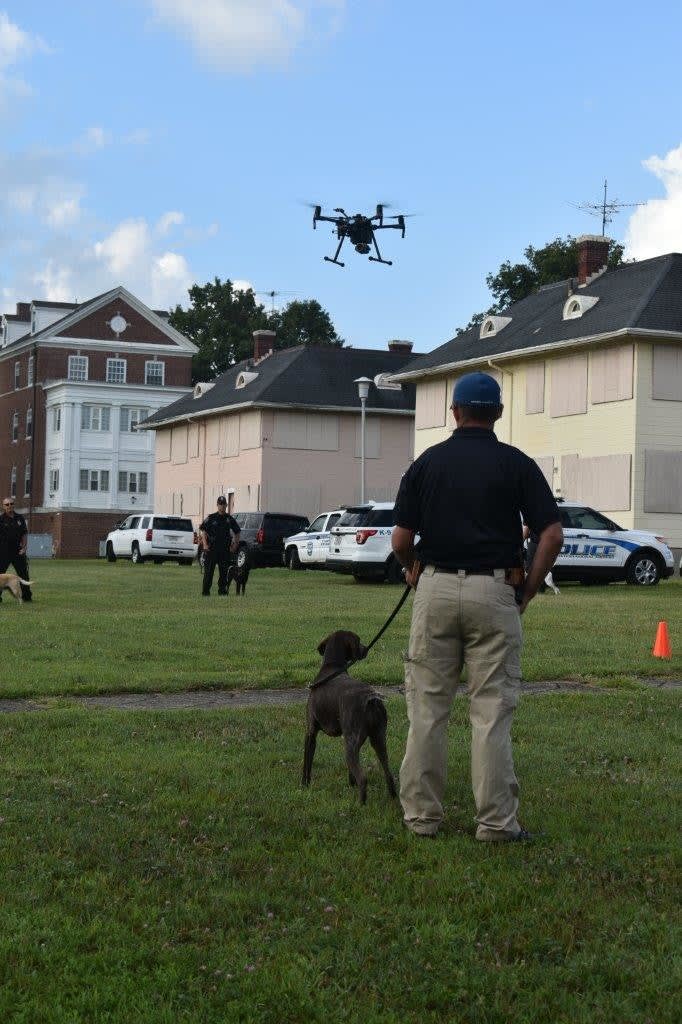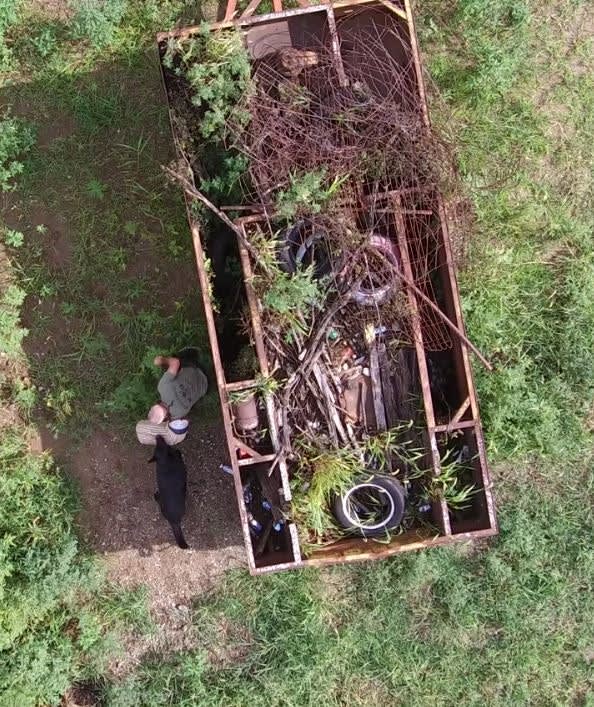Once dogs are comfortable with the drone, Daniels and Lunsford test teams with increasingly challenging scenarios. Daniels explains they train at Preble County Fairgrounds, which has a lot of buildings, wooded areas, a creek, open fields and parking lots.
“The area works out really well because we can have the K-9 follow a scent,” he says. “We will hide a person who is suited up or wearing a bite sleeve and then bring out the K-9 and the drone. We use training rifles, training pistols, and we have everyone go through the scenario just like they would in an actual scenario. There are no shortcuts.”
Daniels recommends that handlers use long leads because it makes it easier for the drones to follow K-9 teams from above. “When you have a dog running without a leash, it’s hard to keep up with them,” he says. “That’s also a training issue we need to work with.”
The effectiveness of training is seen when a drone operator can contact a K-9 handler and accurately report the location of a heat signature, resulting in the dogs heading in that direction. “I might say, ‘Hey I have a heat signature to your 9 o’clock’ and they might say, ‘the scent is taking us that way,'’” he says. “Then we wind up finding who or what we are looking for.”
Drones offer aerial reconnaissance capabilities and thermal imaging technology to cover vast territories and detect heat signatures. Police K-9s excel in scent tracking and search operations on the ground. But it is their synergy when working together that truly maximizes their potential. This synergy comes from meticulous training and coordination between handlers and operators. By conducting joint training exercises, law enforcement agencies can refine protocols, foster trust, and enhance collaboration between K-9 units and drone operators. Daniels concludes.













